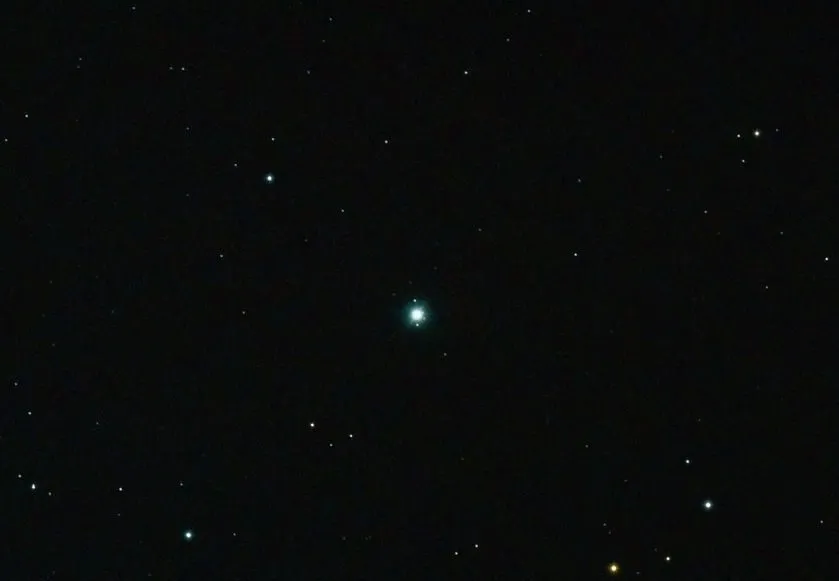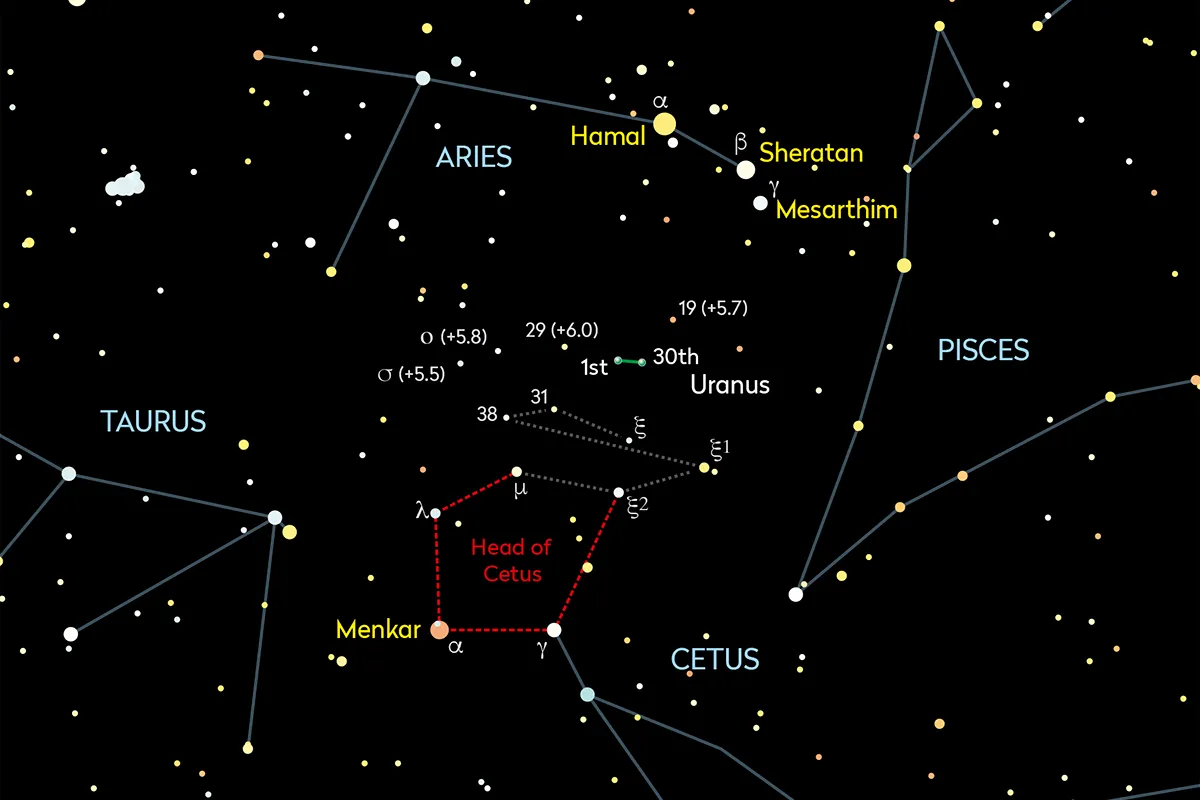It’s often said that the planet Uranus is visible to the naked eye. However, if you ask someone whether they have actually seen Uranus without a telescope, the answer you’ll normally receive is no.
The reason is that this distant planet shines at the edge of naked-eye visibility and any direct views of Uranus aren’t always conclusive.
Most of us live under less than perfect skies. An average dark sky will have a limiting magnitude – that’s the faintest star you can see – somewhere between mag. +5.0 and mag. +5.5 (for more on this, read our guide on stellar magnitude).
Country locations may push this further, perhaps down to mag. +6.0 or even mag. +6.5 from really dark locations.
In addition, the limiting magnitude will vary with altitude on the sky. Although you might be able to see a mag. +6.0 star at the zenith directly overhead, at 10˚ altitude the story will be completely different.

Fortunately, in November 2020 Uranus is the UK’s best-placed planet, able to reach an altitude slightly over +50˚ when due south.
It shines at mag. +5.7, tantalisingly close to the quoted typical naked-eye limit of +6.0 from a dark-sky site.
Another thing that is in the planet’s favour is its location against the stars, placing it against a rather barren patch of sky.A few stars of similar magnitude are nearby, and these can be used productively to navigate towards the planet.
If you do manage to spot Uranus, you may even be able to capture an image of it. Read our guide on how to take photos of Uranus and Neptune to find out more.

How to see Uranus in the night sky
The first thing to do is prepare. Locate a dark spot where you will be able to avoid any contact with light sources for at least 40 minutes.Obviously, this also means timing your observation for a period when the Moon is out of the way.
The period between 9–22 November should be ideal. Allow yourself 20 minutes in total darkness to become dark adapted.
Once this is achieved you can locate the three brighter stars in Aries, Hamal (Alpha (a)), Sheratan (Beta (b)) and Mesarthim (Gamma (g) Arietis).
Next, look for the pentagonal shape that represents the head of Cetus. Its brightest star, Menkar (Alpha (α) Ceti), is the one you’re after.
Uranus lies 60% of the way along a line from Menkar towards Sheratan at the start of the month and then slips slightly southwest throughout November.
Use our chart above to locate the useful guide stars that sit below the planet’s position. The selected guide stars are useful because they present a range of magnitudes, which allow you to ‘approach’ the brightness of Uranus.
Start with Mu (m) then Xi2 (ξ2) and Xi1 (ξ1) Ceti, all shining at mag. +4.3. Now go dimmer by moving on to 38 Arietis at mag. +5.2 , 31 Arietis at mag. +5.6, and finally mag. +5.7 Xi (ξ) Arietis before heading north to Uranus.
Hopefully you can then add Uranus to the list of naked-eye planets you’ve seen.
